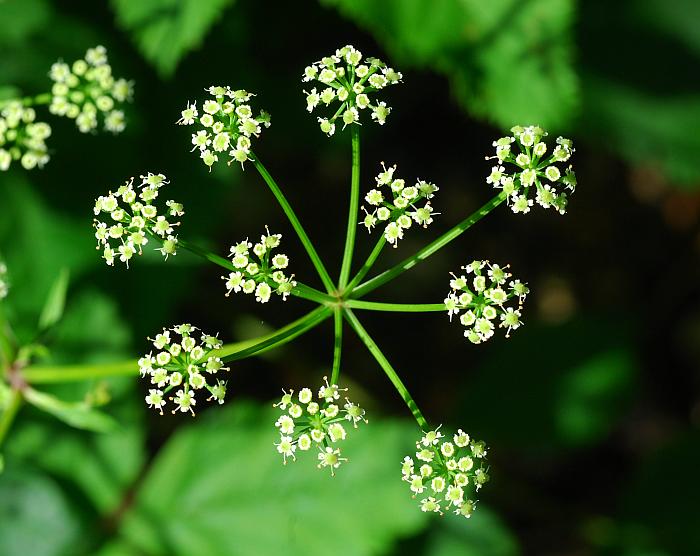Ligusticum canadense (L.) Britton
Lovage

Native
CC = 8
CW = 0
MOC = 21
© SRTurner
Ligusticum canadense (L.) BrittonLovage | |
 |
Native CC = 8 CW = 0 MOC = 21 |
© SRTurner |
|
Family - Apiaceae Habit - Perennial forb with expanded, fibrous base and taproot. Stem - Ascending to erect, to 1.5 m, glabrous.
Leaves - Alternate and sometimes also basal (1 or more usually present at flowering), glabrous, short- to long-petiolate, the sheathing bases not or only slightly inflated. Leaf blades 10-24 cm long, ovate to triangular-ovate in outline, the basal and lower stem leaves ternately (less commonly ternately then pinnately) 3 or 4 times compound, the upper leaves reduced and occasionally simple, the leaflets 25-120 mm long, lanceolate to ovate, occasionally with 1 or 2 basal lobes, narrowed or tapered at the base, tapered to a sharp point at the tip, finely to more coarsely toothed along the margins
Inflorescence - Terminal and often also axillary, mostly compound umbels, long-stalked, the stalks glabrous or sparsely hairy. Involucre absent. Rays 6- 14, unequal in length, 2-5 cm long, glabrous or less commonly sparsely hairy. Involucel of 2-5 entire bractlets, these shorter than the flower stalks, linear or narrowly oblong, glabrous. Flowers 6-14 in each umbellet, the stalks 2-4 mm long.
Florets - Sepals minute triangular teeth. Petals obovate, rounded or bluntly pointed at the tip, white. Ovaries glabrous.
Fruits - Schizocarps 4-7 mm long, ovate-elliptic in outline, rounded at the base, slightly flattened laterally, glabrous, dark brown with usually lighter ribs, each mericarp with 5 narrowly winged ribs.
Flowering - May - July. Habitat - Forests, savannas, bluffs, streambanks. Origin - Native to the U.S. Lookalikes - Several other members of the Apiaceae, including species of Angelica, Levisticum, Perideridia, Cicuta, and others. Other info. - In Missouri, this plant is mostly confined to the southern third of the state. Its distribution within the continental U.S. is east-central. The plant likes virgin mesic woodlands and is relatively intolerant of disturbance. Photographs taken at Taum Sauk State Park, Iron County, MO, 7-23-2018, at Poison Hollow, Howell County, MO, 5-14-2019, and at Carman Springs Natural Area, Howell County, MO, 5-14-2019 (SRTurner). |